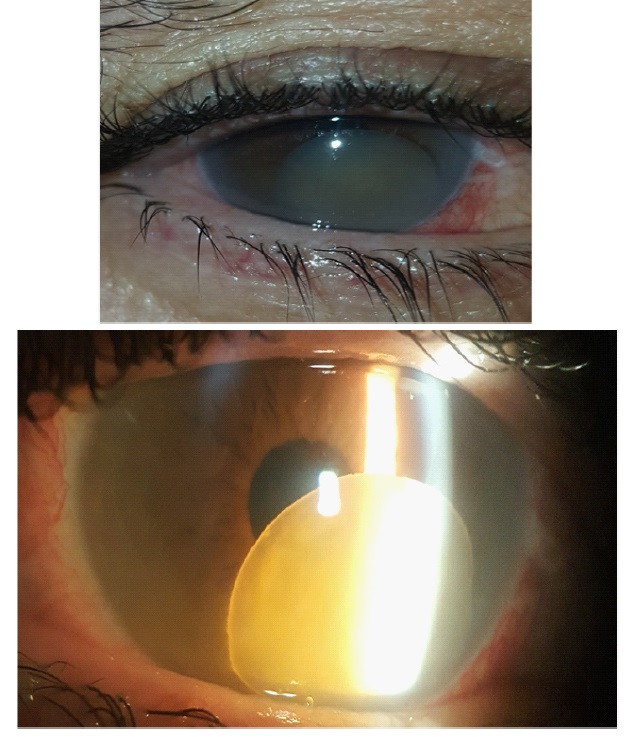
Journal of Clinical Images and Medical Case Reports
ISSN 2766-7820
Clinical Image - Open Access, Volume 3
Spontaneaous dislocation of the crystalline lens in the anterior chamber in a patient with pseudoexfoliation syndrome
Hajar Hnich*; Habiba Tazi; Louai Serghini; Elhassan Abdella; Abdelkarim Boulanouar; Amina Berraho Haman
Ophtalmology B Department, Hospital of Specialties, Rabat, Morocco.
*Corresponding Author: Hajar Hnich
Ophtalmology B Department, Hospital of Specialties, Rabat, Morocco.
Email: hajar.hnich93@gmail.com
Received : Apr 06, 2022
Accepted : May 05, 2022
Published : May 12, 2022
Archived : www.jcimcr.org
Copyright : © Hnich H (2022).
Abstract
Pseudoexfoliation syndrome (PEX) is a systemic disorder of the extracellular matrix that presents primarily via its characteristic ocular manifestations [1]. Typically, white fibrillary residue on the anterior lens capsule and pupillary margin is observed, as are pupillary transillumination defects and pigmentation of the trabecular meshwork [2]. Zonular weakness can be attributed to the deposition of pseudoexfoliative material on the zonular fibers and ciliary processes, resulting in a proteolytic disintegration of the zonule that can lead to spontaneous fragmentation [2]. We report a case of a dislocation of the hole crystalline lens in the anterior chamber in a patient with pseudoexfoliation syndrome.
Citation: Hajar H, Habiba T, Louai S, Elhassan A, Abdelkarim B et al. Spontaneaous dislocation of the crystalline lens in the anterior chamber in a patient with pseudoexfoliation syndrome. J Clin Images Med Case Rep. 2022; 3(5): 1830.
Case description
A 57 years old female patient presented to ophtalmological emergency department with acute onset of red and painful right eye along with decreased visual acuity. Her medical history was negative for a previous ocular trauma or any other pathological condition. Clinical examination found reduced visual acuity to motion of fingers, conjunctival hyperaemia with high intraocular pressure, the crystalline lens was completely dislocated in the anterior chamber (Figure 1). Deposits of pseudoexfoliation material were found in the controlateral eye with no signs of glaucoma. The dislocated lense was removed with favourable outcome, the implantation of an intraocular lens is planned and the patient is continued to be seen in regular follow-up.
References
- Tuteja S, Chawla H. Pseudoexfoliation Syndrome. 2021 Oct 12. In: StatPearls [Internet]. Treasure Island (FL): StatPearls Publishing; 2022 Jan–. PMID: 34662036.
- Calafati J, Tam DY, Ahmed IK. Pseudoexfoliation Syndrome in Cataract Surgery

